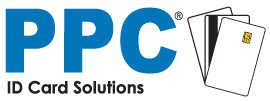When selecting an ID card printer, it’s easy to get caught up in the hardware’s capabilities: double-sided printing, radio-frequency identification, etc.
However, you also need to consider the kind of software that will help you design ID cards. Is the solution easy to use? Does it provide built-in design templates? Ask yourself the following questions before purchasing an ID card printing application.
1. Does it offer smart card encoding?
It can be somewhat frustrating when your ID card printer is capable of producing badges with a smart chip, but your software does not allow you to take advantage of this capability.
For those of you who want to exercise tighter facility and personnel security, smart cards are quite handy. These badges have small computer chips that store and encrypt information as well as communicate with other machines when exchanging data.
2. What databases is it compatible with?
Many organisations have databases that structure employee information. Pulling worker names, addresses, credentials and other data from these systems can make it a lot easier for you to create picture IDs. In addition, if you want readers to communicate with cloud-hosted databases, some ID card printing software enables this function.
For example, CardEze ID card software is compatible with Oracle, Microsoft (MSFT) SQL Server, DB2 and MySQL. According to DB-Engines, Oracle, MySQL and MSFT SQL Server are the three most popular solutions among professionals throughout the world.
3. Does it come with pre-made design templates?
This feature is going to save you more time. Instead of tediously creating ID badge designs from the ground-up, you can choose from a wide selection of pre-made templates. All you have to do is insert photos, choose colour schemes and fill in information.
If the software allows you to customise pre-made templates, then all the better!
4. What kind of security settings does it offer?
Nowadays, many organisations are using biometrics, encryption, electronic signatures and other technologies to protect information. If you want to take advantage of such features, then you need an ID printer solution that allows you to manage them.
Working with biometrics, electronic signatures and other functions can be a tad complicated, depending on the software you have at your disposal. Look for an ID card solution that guides you through the workflow, intuitively teaching you how to integrate the advanced data protection features you need.
In regard to the last point, the software should obviously be easy to use. No one likes to spend hours designing ID badges.


